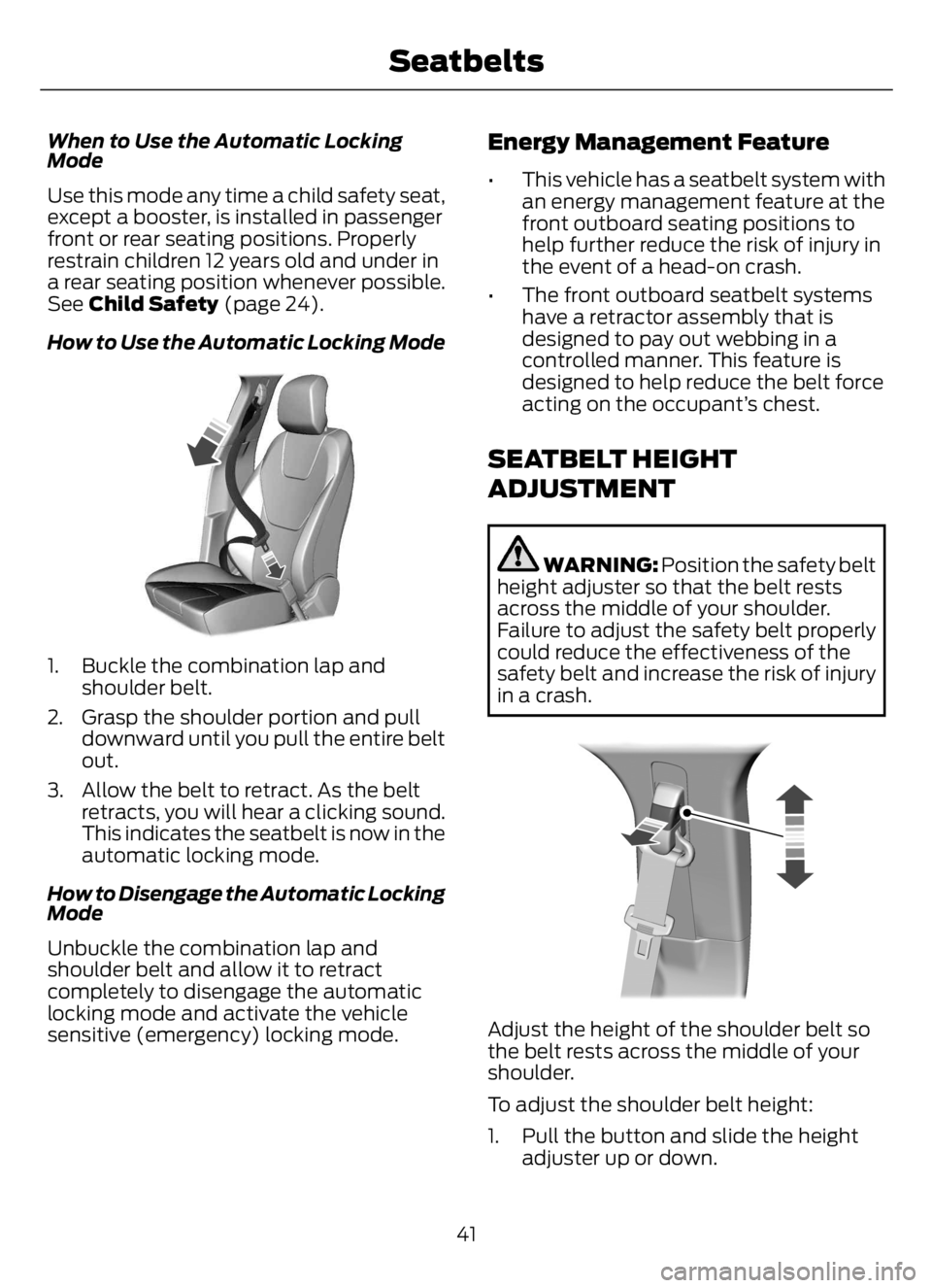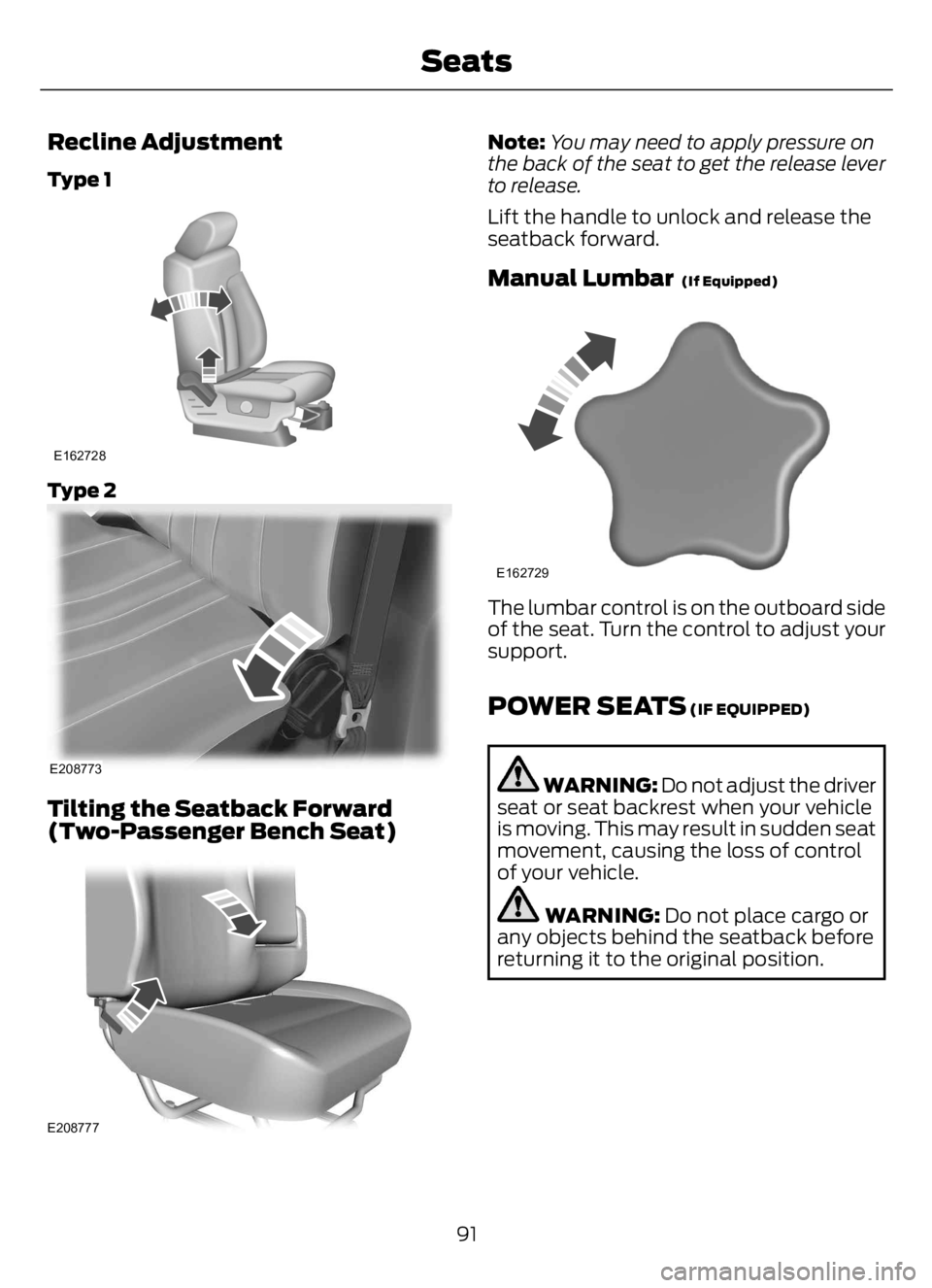2023 FORD F650/750 seat adjustment
[x] Cancel search: seat adjustmentPage 5 of 378

Introduction
About This Manual ..........................................7
Symbols Glossary ..........................................10
Data Recording ................................................13
Perchlorate ........................................................17
Ford Credit .........................................................17
Replacement Parts Recommendation
............................................................................1 7
Special Notices ...............................................18
Mobile Communications Equipment
...........................................................................1 9
Export Unique Options ...............................20
Federal Highway Administration
Regulation ...................................................20
Entering, Exiting or Climbing on This
Vehicle ...........................................................20
Environment
Protecting the Environment .......................21
Noise Pollution Control ................................21
At a Glance
Instrument Panel ...........................................23
Child Safety
General Information .....................................24
Installing Child Restraints ..........................26
Booster Seats .................................................32
Child Restraint Positioning ........................34
Child Safety Locks ........................................35
Seatbelts
Principle of Operation ..................................37
Fastening the Seatbelts .............................38
Seatbelt Height Adjustment ......................41
Seatbelt Warning Lamp and Indicator
Chime ............................................................42
Seatbelt Reminder ........................................42
Child Restraint and Seatbelt
Maintenance ...............................................44
Seatbelt Extensions .....................................44
Keys and Remote Controls
General Information on Radio
Frequencies .................................................45
Remote Control .............................................46
Replacing a Lost Key or Remote Control
...........................................................................47
Doors and Locks
Locking and Unlocking ...............................48
Security
Passive Anti-Theft System .......................50
Steering Wheel
Adjusting the Steering Wheel ....................51
Cruise Control - Vehicles With: Adaptive
Cruise Control ..............................................51
Cruise Control - Vehicles With: Cruise
Control ...........................................................51
Information Display Control ......................52
Horn ....................................................................52
Wipers and Washers
Windshield Wipers ........................................53
Windshield Washers ....................................53
Lighting
General Information .....................................54
Lighting Control .............................................54
Autolamps .......................................................55
Instrument Lighting Dimmer ....................55
Headlamp Exit Delay ...................................55
Daytime Running Lamps - Vehicles With:
Daytime Running Lamps (DRL) ..........56
Daytime Running Lamps - Vehicles With:
Configurable Daytime Running Lamps
..........................................................................5 6
Automatic High Beam Control ................56
Direction Indicators .......................................57
Interior Lamps .................................................57
1
Table of Contents
Page 44 of 378

Using Seatbelts During Pregnancy
WARNING: Always ride and drive
with your seatback upright and properly
fasten your seatbelt. Fit the lap portion
of the seatbelt snugly and low across
the hips. Position the shoulder portion of
the seatbelt across your chest. Pregnant
women must follow this practice. See
the following figure.
E1422590
Pregnant women should always wear their
seatbelt. Position the lap belt portion of a
combination lap and shoulder belt low
across the hips below the belly and worn
as tight as comfort allows. Position the
shoulder belt to cross the middle of the
shoulder and the center of the chest.
Seatbelt Locking Modes
WARNING: If your vehicle is
involved in a crash, have the seatbelts
and associated components inspected
as soon as possible. Failure to follow this
instruction could result in personal injury
or death.The safety restraints in the vehicle are
combination lap and shoulder belts. The
driver seatbelt has the first type of locking
mode. The front outboard passenger and
rear outboard seat seatbelts have both
types of locking modes described as
follows:
Vehicle Sensitive Mode
This is the normal retractor mode, which
allows free shoulder belt length
adjustment to your movements and
locking in response to vehicle movement.
For example, if the driver brakes suddenly
or turns a corner sharply, or the vehicle
receives an impact of about 5 mph
(8 km/h) or more, the combination
seatbelts will lock to help reduce forward
movement of the driver and passengers.
In addition, the retractor is designed to lock
if you pull the webbing out too quickly. If
the seatbelt retractor locks, slowly lower
the height adjuster to allow the seatbelt
to retract. If the retractor does not unlock,
pull the seatbelt out slowly then feed a
small length of webbing back toward the
stowed position. For rear seatbelts, recline
the rear seat backrest or push the seat
backrest cushion away from the seatbelt.
Feed a small length of webbing back
toward the stowed position.
Automatic Locking Mode
In this mode, the shoulder belt
automatically prelocks. The belt still
retracts to remove any slack in the
shoulder belt. The automatic locking mode
is not available on the driver seatbelt or
optional front center or rear center
seatbelt.
40
Seatbelts
Page 45 of 378

When to Use the Automatic Locking
Mode
Use this mode any time a child safety seat,
except a booster, is installed in passenger
front or rear seating positions. Properly
restrain children 12 years old and under in
a rear seating position whenever possible.
See Child Safety (page 24).
How to Use the Automatic Locking Mode
E142591E142591
1. Buckle the combination lap and
shoulder belt.
2. Grasp the shoulder portion and pull
downward until you pull the entire belt
out.
3. Allow the belt to retract. As the belt
retracts, you will hear a clicking sound.
This indicates the seatbelt is now in the
automatic locking mode.
How to Disengage the Automatic Locking
Mode
Unbuckle the combination lap and
shoulder belt and allow it to retract
completely to disengage the automatic
locking mode and activate the vehicle
sensitive (emergency) locking mode.
Energy Management Feature
• This vehicle has a seatbelt system with
an energy management feature at the
front outboard seating positions to
help further reduce the risk of injury in
the event of a head-on crash.
• The front outboard seatbelt systems
have a retractor assembly that is
designed to pay out webbing in a
controlled manner. This feature is
designed to help reduce the belt force
acting on the occupant’s chest.
SEATBELT HEIGHT
ADJUSTMENT
WARNING: Position the safety belt
height adjuster so that the belt rests
across the middle of your shoulder.
Failure to adjust the safety belt properly
could reduce the effectiveness of the
safety belt and increase the risk of injury
in a crash.
E145664E145664
Adjust the height of the shoulder belt so
the belt rests across the middle of your
shoulder.
To adjust the shoulder belt height:
1. Pull the button and slide the height
adjuster up or down.
41
Seatbelts
Page 95 of 378

Recline Adjustment
Type 1
E162728
Type 2
E208773
Tilting the Seatback Forward
(Two-Passenger Bench Seat)
E208777
Note:You may need to apply pressure on
the back of the seat to get the release lever
to release.
Lift the handle to unlock and release the
seatback forward.
Manual Lumbar (If Equipped)
E162729
The lumbar control is on the outboard side
of the seat. Turn the control to adjust your
support.
POWER SEATS (IF EQUIPPED)
WARNING: Do not adjust the driver
seat or seat backrest when your vehicle
is moving. This may result in sudden seat
movement, causing the loss of control
of your vehicle.
WARNING: Do not place cargo or
any objects behind the seatback before
returning it to the original position.
91
Seats
Page 251 of 378

5. Turn the air conditioning (if equipped)
on and allow the engine to idle for at
least one minute.
6. Release the parking brake. With your
foot on the brake pedal and with the
air conditioning on, put the vehicle in
drive (D) and allow the engine to idle
for at least one minute.
• If you do not allow the engine to
relearn its idle trim, the idle quality
of your vehicle may be adversely
affected until the idle trim is
eventually relearned.
7. Drive the vehicle to complete the
relearning process
• The vehicle may need to be driven
10 mi (16 km) or more to relearn the
idle and fuel trim strategy along
with the ethanol content for flexible
fuel vehicles.
If the battery has been disconnected or a
new battery has been installed, the clock
and radio settings must be reset once the
battery is reconnected.
Always dispose of automotive
batteries in a responsible manner.
Follow your local authorized standards
for disposal. Call your local authorized
recycling center to find out more about
recycling automotive batteries.
Battery Management System (If
Equipped)
The battery management system (BMS)
monitors battery conditions and takes
actions to extend battery life. If excessive
battery drain is detected, the system may
temporarily disable certain electrical
features to protect the battery. Those
electrical accessories affected include the
rear defrost, heated/cooled seats, climate
control fan, heated steering wheel, audio
and navigation system. A message may be
shown in the information displays to alertthe driver that battery protection actions
are active. These messages are only for
notification that an action is taking place,
and not intended to indicate an electrical
problem or that the battery requires
replacement.
Electrical accessory installation
To ensure proper operation of the BMS,
any electrical devices that are added to
the vehicle should not have their ground
connection made directly at the negative
battery post. A connection at the negative
battery post can cause inaccurate
measurements of the battery condition
and potential incorrect system operation.
Note:Electrical or electronic accessories
added to the vehicle by the dealer or the
owner may adversely affect battery
performance and durability, and may also
affect the performance of other electrical
systems in the vehicle.
When a battery replacement is required,
the battery should only be replaced with
a Ford recommended replacement battery
which matches the electrical requirements
of the vehicle. After battery replacement,
or in some cases after charging the battery
with the external charger, the BMS requires
eight hours of vehicle sleep time (key off
with doors closed) to relearn the new
battery state of charge. Prior to relearning
the state of charge, the BMS may disable
electrical features (to protect the battery)
earlier than normal.
ADJUSTING THE HEADLAMPS
Vertical Aim Adjustment
The headlamps on your vehicle are
properly aimed at the assembly plant. If
your vehicle has been in an accident, the
alignment of your headlamps should be
checked by your authorized dealer.
247
Maintenance
Page 377 of 378

Rear Axle Fluid Check................................260
Rear Axle..........................................................134
General Information..........................................134Rear Seat Armrest.........................................94
Rear Seats.........................................................93
Recommended Towing Weights.............179
Refueling - Diesel..........................................110
Refueling - Gasoline.....................................112
Remote Control..............................................46
Removing a Headlamp.............................250
Repairing Minor Paint Damage..............266
Replacement Parts
Recommendation.........................................17
Replacing a Lost Key or Remote
Control.............................................................47
Reporting Safety Defects (Canada
Only)..............................................................199
Reporting Safety Defects (U.S.
Only)..............................................................198
Resuming the Set Speed...........................162
Roadside Assistance..................................188
Roadside Emergencies..............................188
Rollover Warning.........................................338
Running-In
See: Breaking-In..................................................186Running Out of Fuel - Diesel.....................110
Running Out of Fuel - Gasoline................110
S
Safety Precautions......................................105
Scheduled Maintenance............................319
Seatbelt Extensions......................................44
Seatbelt Height Adjustment.......................41
Seatbelt Reminder.........................................42
Seatbelts............................................................37
Principle of Operation.........................................37Seatbelt Warning Lamp and Indicator
Chime...............................................................42
Seats...................................................................88
Security..............................................................50
Selective Catalytic Reductant System -
Diesel...............................................................118
Setting the Cruise Control Speed...........161
Sitting in the Correct Position...................88
Snow Chains
See: Using Snow Chains.................................284
Spare WheelSee: Changing a Road Wheel.......................284Special Notices................................................18
Special Operating Conditions Scheduled
Maintenance...............................................329
Speed Control
See: Cruise Control - Vehicles With: Adaptive
Cruise Control.................................................155
See: Cruise Control - Vehicles With: Cruise
Control................................................................161
Spring U-Bolt Check..................................260
Stability Control.............................................151
Principle of Operation - Vehicles With: Air
Brakes.................................................................152
Principle of Operation - Vehicles With:
Hydraulic Brakes.............................................151
Starter SwitchSee: Ignition Switch..........................................100Starting a Gasoline Engine........................101
Starting and Stopping the Engine.........100
General Information.........................................100
Starting the Engine............................................102
Starting the Engine......................................102Starting a Diesel Engine...................................102Steering............................................................167
Steering System Inspection....................259
Steering Wheel.................................................51
Storage Compartments..............................99
Streaming Bluetooth Audio......................312
Sun Visors.........................................................62
Suspension System Inspection..............259
Switching Cruise Control On and
Off....................................................................161
Switching Off the Engine...........................102
Switching the Pneumatic Locking
Differential On and Off............................135
Symbols Glossary...........................................10
T
Technical SpecificationsSee: Capacities and Specifications............288The Better Business Bureau (BBB) Auto
Line Program (U.S. Only).......................196
Tire Care..........................................................269
Tires
See: Wheels and Tires.....................................269Towing a Trailer..............................................178
373
Index